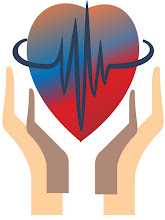What is a Cyclone?
Cyclones are huge revolving storms caused by winds blowing around a central area of low atmospheric pressure. In the northern hemisphere, cyclones are called hurricanes or typhoons and their winds blow in an anti-clockwise circle. In the southern hemisphere, these tropical storms are known as cyclones, whose winds blow in a clockwise circle.How do Cyclones occur?
Cyclones develop over warm seas near the Equator. Air heated by the sun rises very swiftly, which creates areas of very low pressure. As the warm air rises, it becomes loaded with moisture which condenses into massive thunderclouds. Cool air rushes in to fill the void that is left, but because of the constant turning of the Earth on its axis, the air is bent inwards and then spirals upwards with great force. The swirling winds rotate faster and faster, forming a huge circle which can be up to 2,000 km across. At the centre of the storm is a calm, cloudless area called the eye, where there is no rain, and the winds are fairly light.
Satellite view over a hurricane, with the eye at the center
As the cyclone builds up it begins to move. It is sustained by a steady flow of warm, moist air. The strongest winds and heaviest rains are found in the towering clouds which merge into a wall about 20-30 km from the storm's centre. Winds around the eye can reach speeds of up to 200 km/h, and a fully developed cyclone pumps out about two million tonnes of air per second. This results in more rain being released in a day than falls in a year in a city like London.When and where do Cyclones occur?
| Cyclones begin in tropical regions, such as northern Australia, South-East Asia and many Pacific islands. They sometimes drift into the temperate coastal areas, threatening more heavily populated regions to the South. Northern Australia has about four or five tropical cyclones every year during the summertime wet season. For a cyclone to develop, the sea surface must have a temperature of at least 26ºC. |
Why do Cyclones occur?
When warm air rises from the seas and condenses into clouds, massive amounts of heat are released. The result of this mixture of heat and moisture is often a collection of thunderstorms, from which a tropical storm can develop.The trigger for most Atlantic hurricanes is an easterly wave, a band of low pressure moving westwards, which may have begun as an African thunderstorm. Vigorous thunderstorms and high winds combine to create a cluster of thunderstorms which can become the seedling for a tropical storm.
Typhoons in the Far East and Cyclones in the Indian Ocean often develop from a thunderstorm in the equatorial trough. During the hurricane season, the Coriolis effect of the Earth's rotation starts the winds in the thunderstorm spinning in a circular motion.
Cyclone Danger
Cyclones create several dangers for people living around tropical areas. The most destructive force of a cyclone comes from the fierce winds. These winds are strong enough to easily topple fences, sheds, trees, power poles and caravans, while hurling helpless people through the air. Many people are killed when the cyclone's winds cause buildings to collapse and houses to completely blow away.A cyclone typically churns up the sea, causing giant waves and surges of water known as storm surges. The water of a storm surge rushes inland with deadly power, flooding low-lying coastal areas. The rains from cyclones are also heavy enough to cause serious flooding, especially along river areas.

Storm surge damage
Long after a cyclone has passed, road and rail transport can still be blocked by floodwaters. Safe lighting of homes and proper refrigeration of food may be impossible because of failing power supplies. Water often becomes contaminated from dead animals or rotting food, and people are threatened with diseases like gastroenteritis.Major Cyclones, Hurricanes and Typhoons
Year | Area of Cyclone | Death toll (est.) | |
1900 | Galveston, Texas, USA | 10 000 - 12 000 | |
1906 | Society and Cook Islands | 10 000 | |
1963 | Bangladesh | 15 000 | |
1964 (May) | Bangladesh | 35 000 | |
1965 (Jun) | Bangladesh | 15 000 | |
1970 | Caribbean coast | 1 000 000 | |
1977 | Honduras | 100 000 | |
1985 | South-eastern India | 15 000 - 100 000 | |
1991 | Bangladesh | 139 000 | |




No comments:
Post a Comment